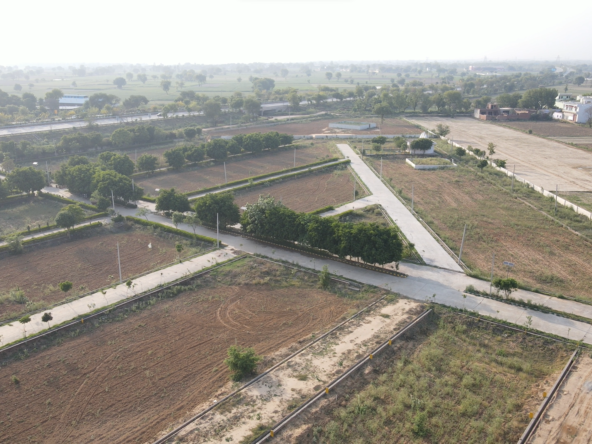Investing in real estate often involves a choice between a residential plot and a residential flat. Each option has its own advantages and considerations, making it crucial to thoroughly compare the two before making a decision. In this article, we will provide a comprehensive analysis of residential plots and residential flats as investment options, highlighting the key differences and factors to consider.
Appreciation Potential
When it comes to appreciation potential, both residential plots and residential flats offer unique advantages. Residential flats, particularly those situated in developed areas or prime locations, tend to appreciate faster due to the high demand for ready-to-move-in properties. These areas often boast amenities such as schools, hospitals, and shopping centers, which attract buyers and tenants alike.
On the other hand, residential plots located in upcoming or developing areas have significant appreciation potential as infrastructure and amenities improve over time. As the city expands, the demand for land increases, leading to an increase in plot values. Additionally, residential plots offer the flexibility to develop them into multiple units or sell them in parts, maximizing the return on investment.
Customization and Flexibility
Investing in a residential plot provides the advantage of customization and flexibility. With a plot, you have the freedom to design and construct a house according to your preferences and requirements. This level of customization allows you to create a space that suits your lifestyle and reflects your personal taste. Whether it’s the architectural style, layout, or materials used, you have complete control over the design process.
In contrast, residential flats offer convenience as they are typically ready for occupancy and require minimal effort for interior design and construction. This is particularly appealing to individuals seeking a hassle-free living arrangement. Flats often come with standard amenities such as security, maintenance, and recreational facilities, saving you from additional expenses and management responsibilities.
Cost Considerations
Cost is a significant factor when choosing between a residential plot and a residential flat. In general, residential plots tend to have a lower upfront cost compared to flats in the same area. However, it’s important to consider additional expenses associated with plots. Construction costs, obtaining permits, and developing basic infrastructure all need to be factored in when opting for a residential plot.
On the other hand, residential flats, though relatively more expensive, often include amenities such as security, maintenance, and recreational facilities in the overall cost. These amenities can save you from the hassle and expenses associated with their management. Moreover, ready-to-move-in flats provide immediate occupancy, eliminating the need for construction-related costs and delays.
Rental Income Potential
If you’re considering real estate as an investment for rental income, residential flats generally offer a more straightforward option. With a ready-to-move-in flat, you can start generating rental income immediately after purchase. Flats in popular residential areas or near business hubs tend to have higher rental demand, making them an attractive investment option. The convenience and amenities provided by flats often attract professionals and families willing to pay a premium for such properties. Additionally, property management companies can assist in finding tenants and managing the rental process.
Residential plots, however, require additional time and investment for construction before generating rental income. The process of developing a plot into a rental property involves construction, obtaining necessary approvals, and marketing efforts to attract tenants. While it may take longer to start earning rental income from a residential plot, once established, it can offer higher rental income potential, especially if strategically located and offering unique features.
Long-Term Investment
In terms of long-term investment, residential plots generally hold a greater advantage. As cities expand and develop, the demand for land increases, leading to an appreciation in plot values. Investing in a residential plot allows you to participate in the growth of the surrounding area, significantly enhancing your return on investment. Furthermore, the option to sell the plot in parts or develop it into multiple units provides opportunities for maximizing returns.
While residential flats can appreciate in value, they may face challenges in terms of maintenance and potential redevelopment in the future. Factors such as the age of the building, future infrastructure plans in the area, and potential restrictions on redevelopment need to be considered. Nonetheless, a well-maintained and strategically located residential flat can provide steady returns over the years.
Conclusion
Choosing between a residential plot and a residential flat for investment requires careful consideration of various factors. Both options have their own advantages and considerations. Residential flats offer convenience, rental income potential, and faster appreciation, while residential plots provide customization, flexibility, and long-term investment opportunities. It is crucial to evaluate these factors in line with your financial goals, personal preferences, and risk appetite. Ultimately, both residential plots and residential flats can be profitable investments if chosen wisely and aligned with your investment strategy.




